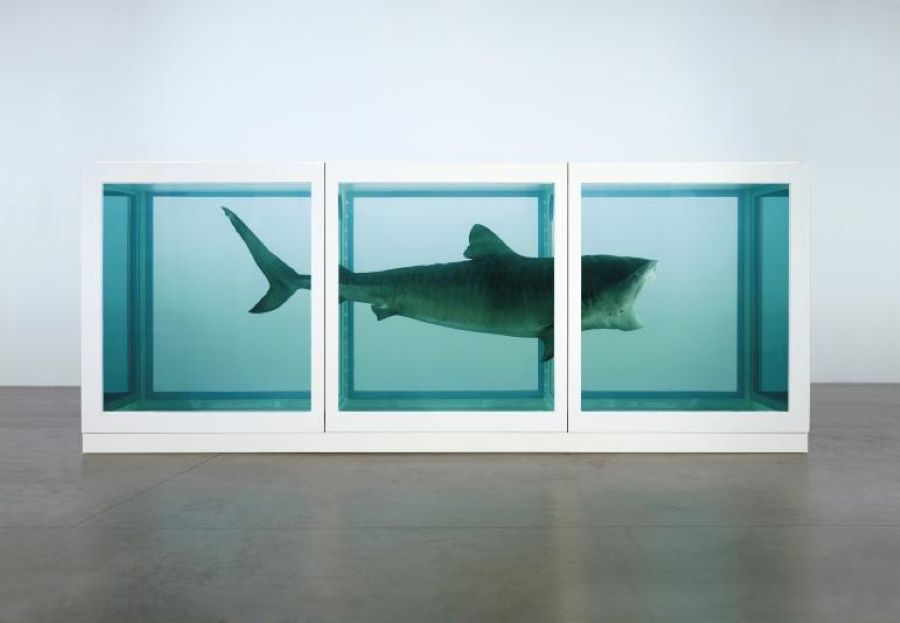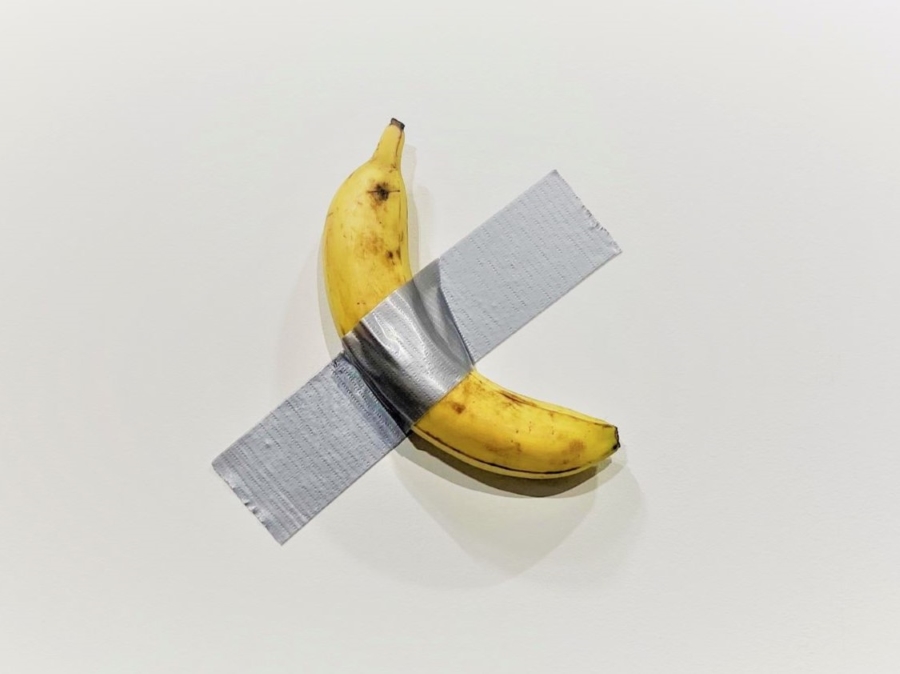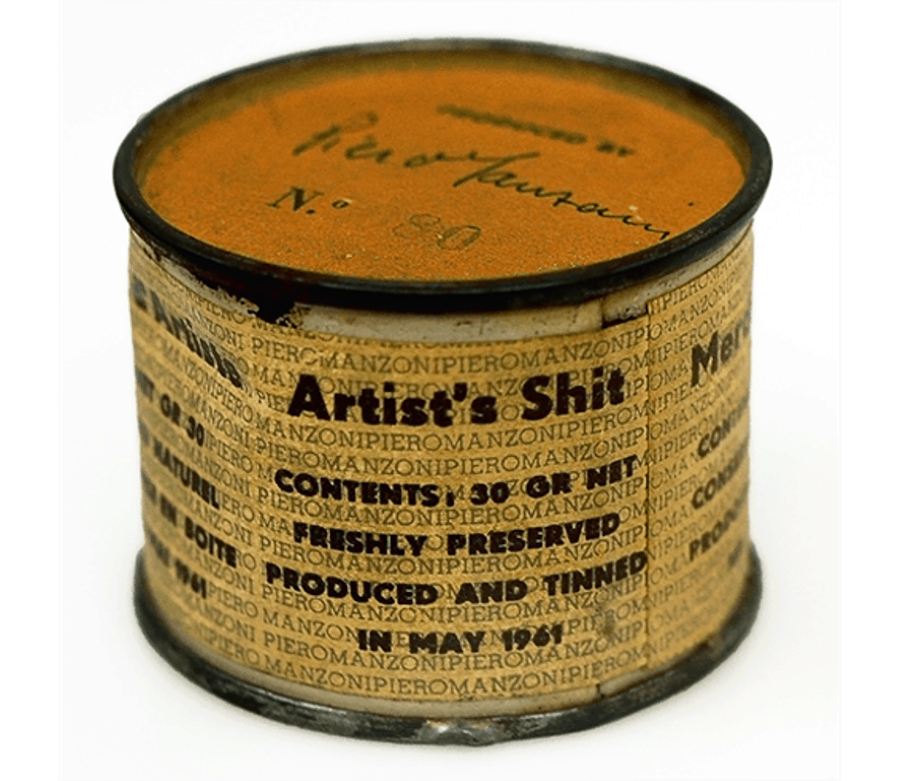
Art Auctions: Extraordinary art that fetched staggering prices
In the world of auctions, contemporary art often pushes the limits of value and reaches astronomical prices. These amazing art works at auction consistently challenge conventional notions of worth, with seemingly simple yet thought-provoking pieces commanding bids as high as $150,000. What makes these auction lots truly remarkable is their ability to ignite discussions, enabling viewers to forge unique, personal interpretations, often diverging from the artist's original concept.
As outlined by the creative businesswoman, Sophia Amoruso:
Nothing will teach you more about perceived value than taking something with literally no value and selling it in the auction format. It teaches you the beauty and power of presentation, and how you can make magic out of nothing.
Here, we’ll explore four extraordinary artworks and how their staggering auctioned prices reveal the value of personal meaning and expression in the art world.
1. ‘The Physical Impossibility of Death in the Mind of Someone Living’ by Damien Hirst
 The Physical Impossibility of Death in the Mind of Someone Living by Damien Hirst
The Physical Impossibility of Death in the Mind of Someone Living by Damien Hirst Damien Hirst’s ‘The Physical Impossibility of Death in the Mind of Someone Living’ was created in 1991. It consists of a deceased 16-foot tiger shark preserved in formaldehyde and encased in a vitrine, approximately 17-foot-long by 7-foot-high.
This artwork was commissioned by the contemporary art collector, Charles Saatchi, and sold for an undisclosed figure between $8 million to $12 million, a record-high price for contemporary art. The artwork was purchased by the Connecticut billionaire, Steven A. Cohen, who
liked the whole fear factor
behind the reality of the shark.
Cohen’s attraction to the fear and shock factor demonstrates Hirst’s success in the art world. By playing with themes of life and death whilst testing preconceived notions of art, Hirst and his artwork are widely controversial.
As outlined in 2007 by The New York Times,
Mr. Hirst frequently attempts to sear the mind [...]. In line with the piece’s name, the shark represents both life and death in a way that is difficult to understand until you see it in its tank, poised and silent. It lends a diabolical, deathlike shape to the essentially evil need to survive.
2. ‘Comedian’ by Maurizio Cattelan
 Comedian by Maurizio Cattelan © Rhona Wise, Shutterstock
Comedian by Maurizio Cattelan © Rhona Wise, ShutterstockCattelan’s ‘Comedian’ consists of a banana duct-taped to a wall. This was first shown and sold in 2019 at the Art Basel Fair in Miami Beach, which was replaced several times as the banana would decay. The exhibitions of ‘Comedian’ attracted a viral audience, social media trends, and critical debate.
The title ‘Comedian’ reflects Cattelan’s light-hearted approach, which is ironic when considering the mass attention given to this piece. ‘Comedian’ raises debate over the commercialization of art, the influence of art institutions, and the role of the artist in society.
The three editions of ‘Comedian’ were sold. The first two were sold at the Art Basel fair for $120,000, one of the buyers was Sarah Andelman, a founder and director of Colette. Unexpectedly, the creative artist David Datuna ate a banana that was part of the exhibition, which was then swiftly replaced. This incident has become accepted as a piece of performance art, which increases the debate inspired by this piece. Cattelan raised the price for the final edition, actioned off at $150,000.
3. ‘Artist's Shit’ by Piero Maurizio
 Artist's Shit by Piero Maurizio
Artist's Shit by Piero MaurizioManzoni’s ‘Artist’s Shit’ is a can, supposedly filled with ‘shit’. In 1961, Manzoni produced 90 of these tin cans. A label wraps the cans, which reads ‘Artist's Shit. Contents 30 gr net. Freshly preserved. Produced and tinned in May 1961’, in Italian, English, French, and German. The dimensions of the cans are around 48 × 65 × 65 millimetres.
In 2016, one of his cans (possibly number 69) was sold at Milan's Il Ponte's auction house at the surreal figure of €275,000. Manzoni sells his cans at the price of their weight in gold.
Manzoni’s ‘Artists Shit’ intentionally demonstrates his subversive humour. He mocks forms of collecting in the art world, writing in a letter to artist Ben Vautier,
if collectors want something intimate, really personal to the artist, there's the artist's own shit, that is really his.
From a conceptual understanding, ‘Artist's Shit’ inquires into the role of artistry and creativity in consumption and consumerism.
Manzoni’s ‘Artist’s Shit’ also appeals in its sense of mystery. Unsuccessful tests have been conducted to find out if the cans truly contain faeces – however, opening the can is the only certain way to find out - yet this would destroy the artwork!
4. ‘Three Urinals‘ by Robert Gober
Robert Gober’s ‘Three Urinals’ was created in 1988. This contemporary artwork consists of three old factory-produced urinals, which have been reconstructed using the materials: enamel, plaster, wire, paint and wood. They each measure 55.2 x 39.3 x 35.5 centimetres.
In 2014, ‘Three Urinals’ sold for $3.52 million at auctions held in New York at Christie’s and Sotheby’s.
Gober’s finished urinals don’t work, they serve as thought-provoking installations. The household object of a urinal continues Gober’s series of artwork that challenges the boundaries between public and private space. His household urinals also allude to the renowned artist, Duchamp, and his concept of the readymade. Duchamp argued,
An ordinary object [can be] elevated to the dignity of a work of art by the mere choice of an artist,
challenging the centuries-old narrative which demanded high levels of artistic talent.
As demonstrated through these extraordinary examples, contemporary art tests the boundaries of value in the art world.
Critics have long debated the value of art; should art be made for art’s sake, serving a purely aesthetic purpose? Or should art be political, a thought-provoking object packed with meaning?
Regardless of your taste in art, from Damien Hirst, whose work is frequently disliked for his supposed lack of artistic ability, to Robert Gober, whose work can be celebrated for his handcrafting talent and conceptual depth, the staggering prices of these artworks are a testament to the value of personal meaning and expression.
The price of art is always a great reminder of its obscurity and how we truly cannot put a price on creativity. To many, it makes no sense – and perhaps that’s where the excitement lies.
If you’re curious to learn more about art, head to these galleries and museums in the French capital.
Credits for the Main photo: © Shutterstock
